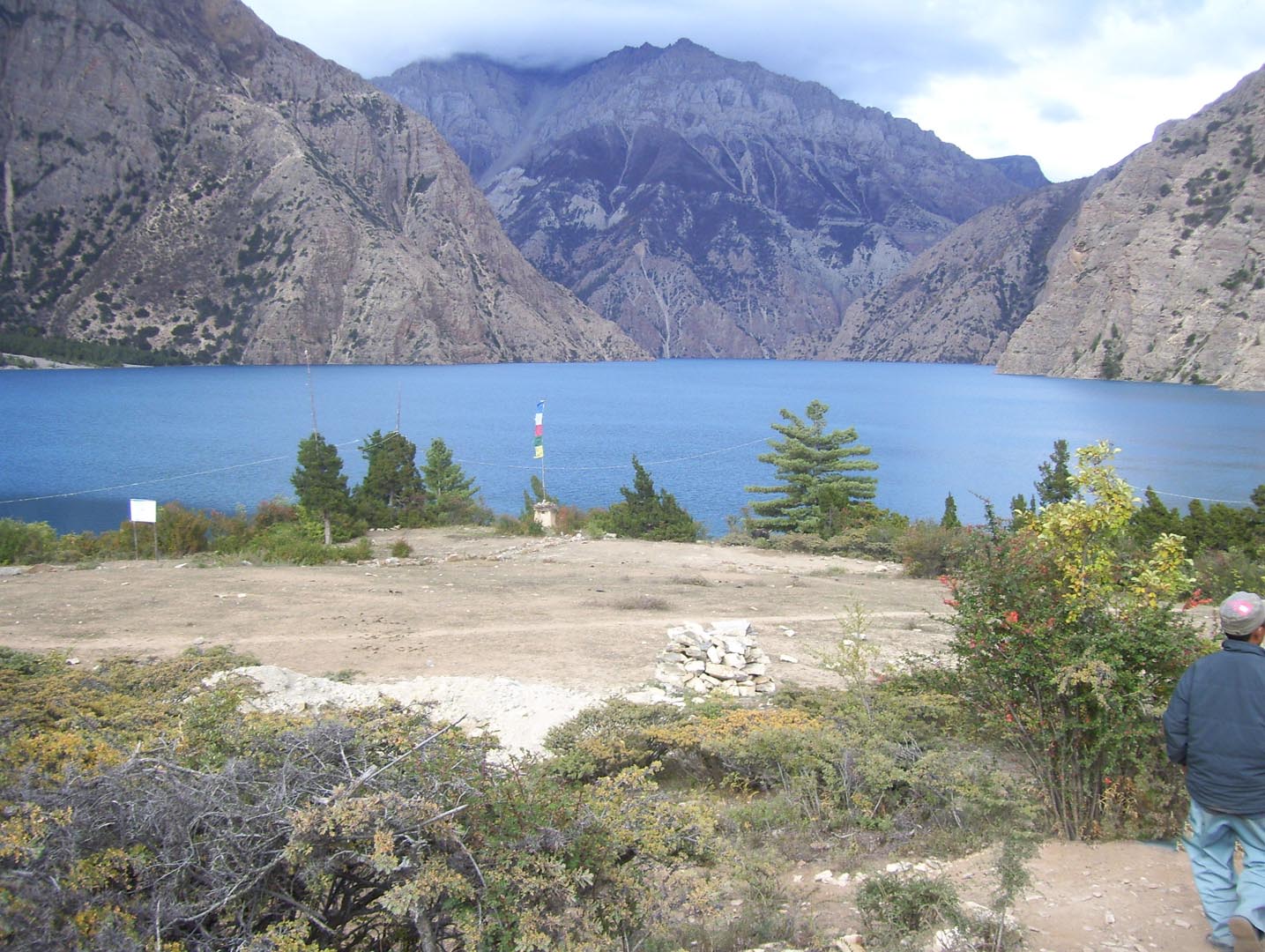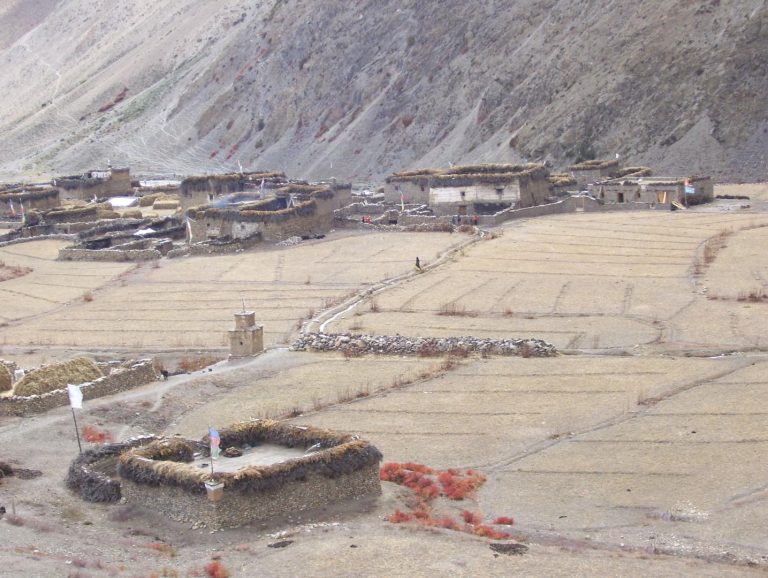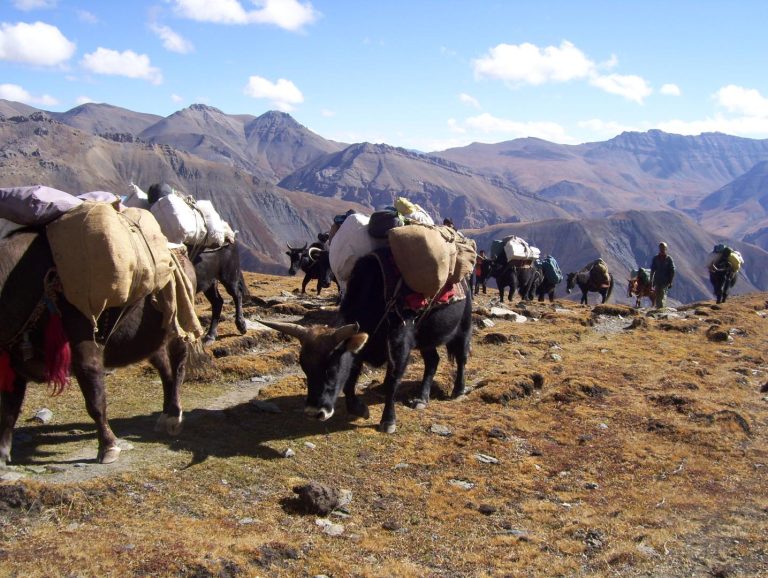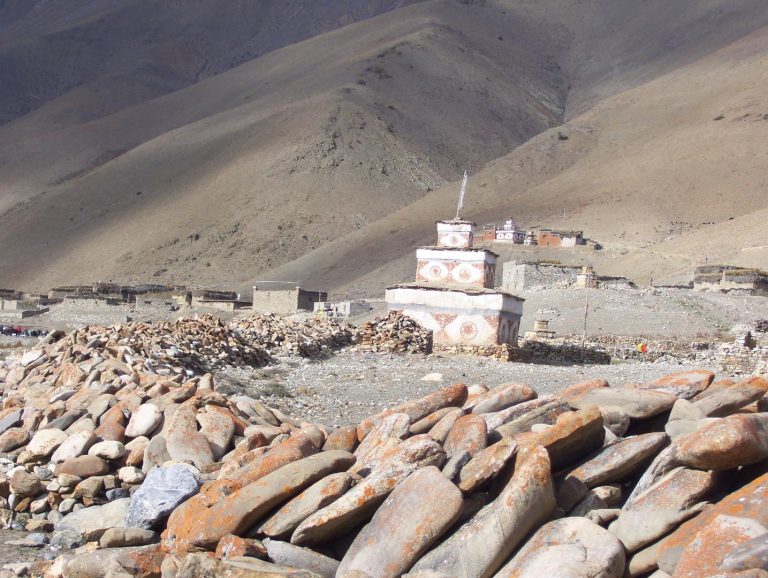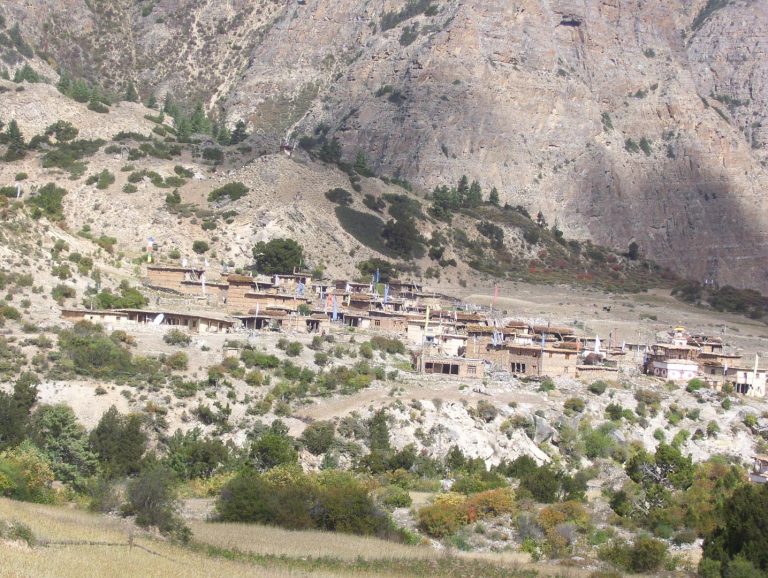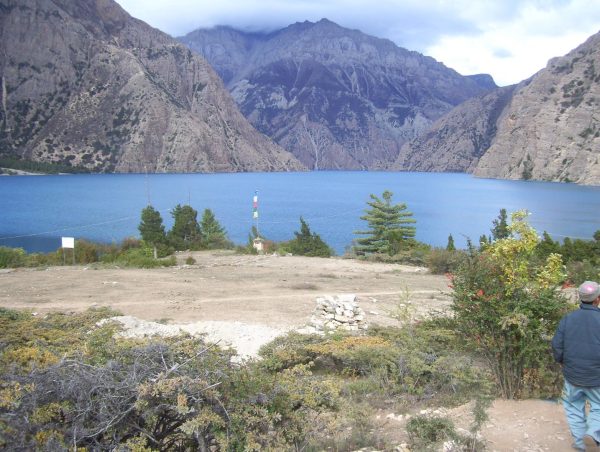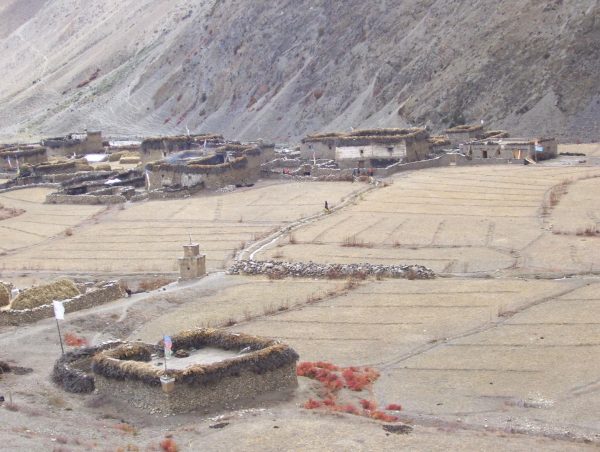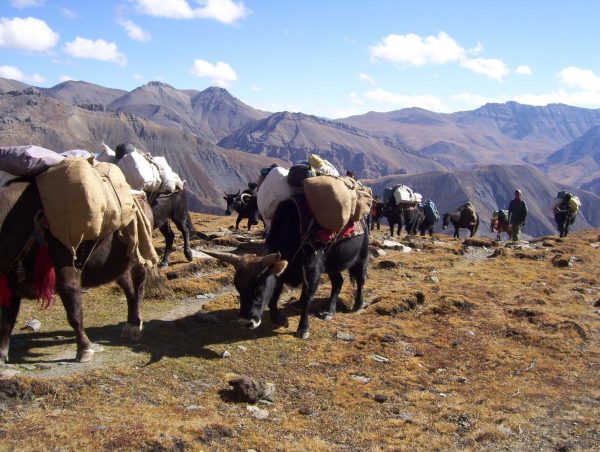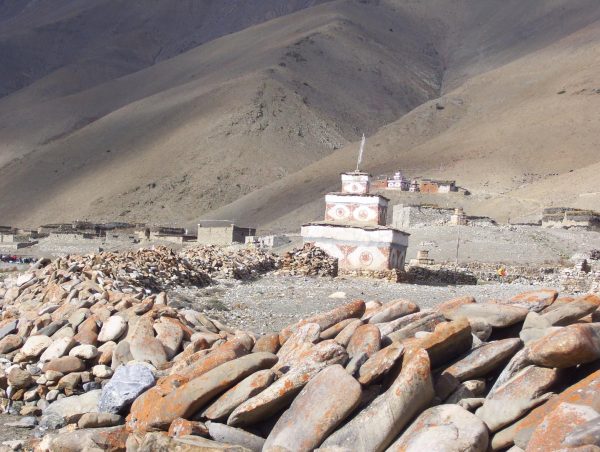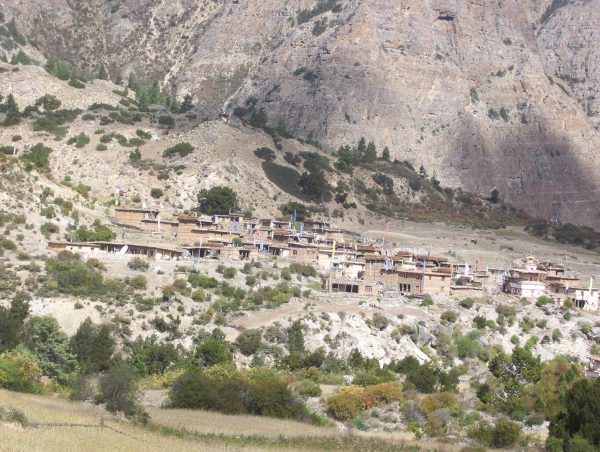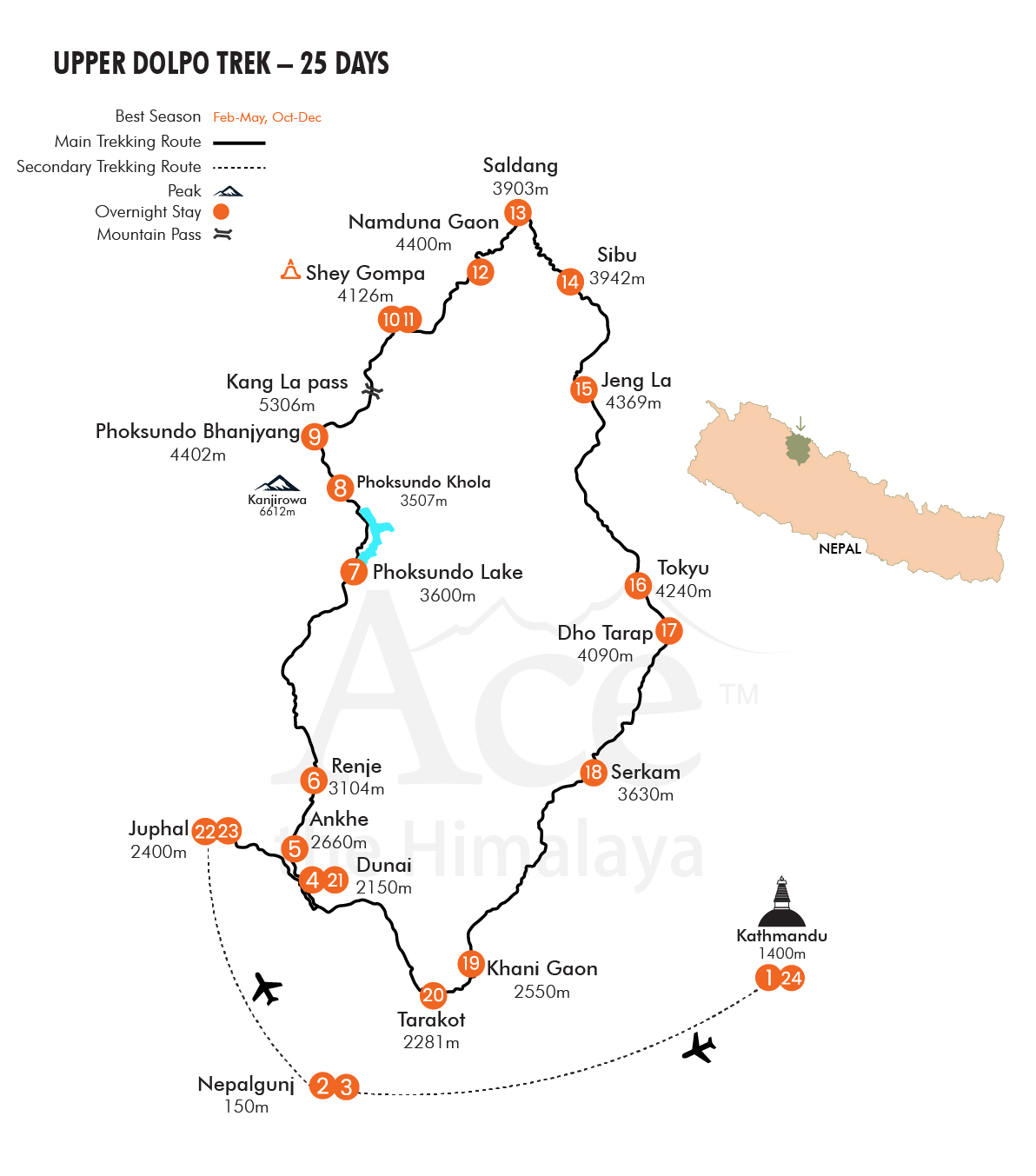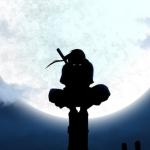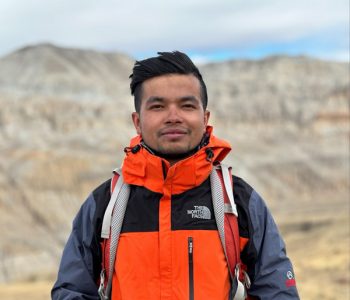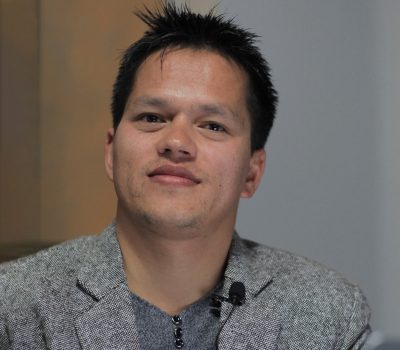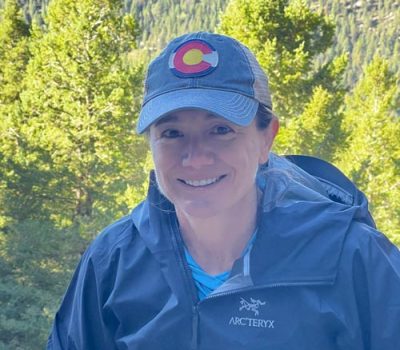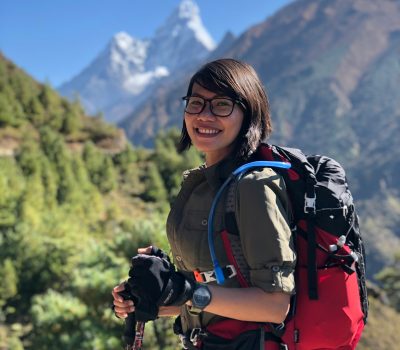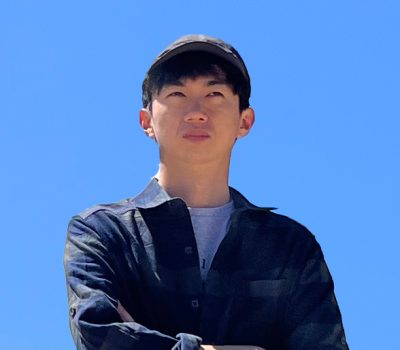Upper Dolpo Trek - 25 Days
Price on Request
Trek through Nepal's remote wilderness, explore hidden monasteries, and experience the untouched mountain lifestyle in the breathtaking Upper Dolpo Trek.
Upper Dolpo Trek Highlights
- Scenic flights to and from Nepalgunj/Juphal
- Explore Shey Phoksundo National Park
- Cross high passes: Kang La, Saldang La, and Jeng La
- Visit ancient Buddhist monasteries, including Shey Gompa
- Experience ancient Tibetan culture and traditions.
- Marvel at the stunning turquoise Phoksundo Lake.
- Trek through picturesque Nangkhong and Tarap Valleys.
- Cross high-altitude passes like Numa La and Baga La.
- Camp under clear, starry skies.
- Witness pristine mountains, rich flora & fauna, and unique local culture
Upper Dolpo Trek Overview
The Upper Dolpo Trek offers an unforgettable journey through one of Nepal’s most remote and isolated regions, often referred to as the “land beyond the Himalayas.”
This extraordinary trek is a rare opportunity to explore untouched landscapes, mysterious monasteries, and encounter some of the world’s highest-altitude communities, while immersing yourself in ancient Tibetan Buddhist culture.
Beginning with a scenic flight to Juphal, the trek takes you deep into the heart of Shey Phoksundo National Park, home to the stunning turquoise waters of Phoksundo Lake.
Along the trail, you’ll cross towering mountain passes such as Kang La, Saldang La, and Jeng La, all of which offer breathtaking views of the surrounding snow-capped peaks and high-altitude deserts.
The region is not only rich in natural beauty but also culturally vibrant, with monasteries like Shey Gompa offering glimpses into the spiritual lives of the Bon and Buddhist communities that have inhabited Dolpo for centuries.
Due to its historical isolation, Upper Dolpo retains a raw and untouched charm. The people here still practice ancient traditions and live in villages perched at altitudes over 4,300 meters, surrounded by stunning mountain backdrops.
You’ll encounter yak caravans, and possibly even catch sight of the elusive snow leopard or blue sheep, which roam these highlands.
This trek is both physically and spiritually rewarding, as you traverse pristine landscapes and engage with a culture that has remained largely unaffected by the outside world.
Whether you are captivated by the dramatic beauty of Phoksundo Lake or the mystique of Shey Gompa, the Upper Dolpo Trek is a once-in-a-lifetime adventure into one of the Himalayas’ last true wildernesses.
Short Itinerary
Arrival at the Tribhuvan International Airport in Kathmandu (1,400 m/4,593 ft). Overnight at a 3-star hotel.
Fly to Nepalgunj from Kathmandu – 1-hour flight. Overnight at a hotel.
Fly to to Juphal (2,400 m/7,874 ft) – 35 minutes. Trek to Dunai (2,150 m/7,054 ft) – 3 to 4 hours. Overnight at a tented camp.
Spare day in Nepalgunj (150 m/492 ft). Overnight at a hotel.
Trek to Ankhe (2,660 m/8,727 ft) – 6 to 7 hours. Overnight at a tented camp.
Trek to Renje (3,104 m/10,184 ft) – 6 to 7 hours. Overnight at a tented camp.
Trek to Phoksundo Lake (3,600 m/11,811 ft) – 6 to 7 hours. Overnight at a tented camp.
Trek to Phoksundo Khola (3,507 m/11,505 ft) – 5 to 6 hours. Overnight at a tented camp.
Trek to Phoksundo Bhanjyang (4,402 m/14,442 ft) – 6 to 7 hours. Overnight at a tented camp.
Cross the Kang La pass (5,306 m/17,405 ft) and trek to Shey Gompa (4,126 m/13,537 ft) – 6 to 7 hours. Overnight at a tented camp.
Rest and exploration day at Shey Gompa. Overnight at a tented camp.
Cross the Saldang La pass (4,785 m/15,698 ft) and trek to Namduna Gaon (4,400 m/14,436 ft) – 6 to 7 hours. Overnight at a tented camp.
Trek to Saldang (3,903 m/12,808 ft) – 4 to 5 hours. Overnight at a tented camp.
Trek to Sibu (3,942 m/12,933 ft) – 5 to 6 hours. Overnight at a tented camp.
Trek to the foot of the Jeng La (4,369 m/14,334 ft) – 5 to 6 hours. Overnight at a tented camp.
Cross the Jeng La pass (4,845 m/15,895 ft) and trek to Tokyu Gaon (4,240 m/13,911 ft) – 6 to 7 hours. Overnight at a tented camp.
Trek to Dho Tarap (4,090 m/13,419 ft) – 4 to 5 hours. Overnight at a tented camp.
Trek to Serkam (3,630 m/11,909 ft) – 6 to 7 hours. Overnight at a tented camp.
Trek to Khani Gaon (2,550 m/8,366 ft) – 6 to 7 hours. Overnight at a tented camp.
Trek to Tarakot (2,281 m/7,484 ft) – 4 to 5 hours. Overnight at a tented camp.
Trek to Dunai (2,052 m/6,732 ft) – 5 to 6 hours. Overnight at a tented camp.
Trek to Juphal (2,404 m/7,887 ft) – 3 to 4 hours. Overnight at a tented camp.
Fly to Kathmandu via Nepalgunj – Total 1-hour and 35-minute flight. Overnight at a 3-star hotel.
Spare day in Juphal (2,400 m/7,874 ft) in case of flight delay. Overnight at a tented camp.
Transfer to the international airport for your final departure.
 Note
Note
Our standard itinerary might differ slightly due to unpredictable happenings and events out of our control. Factors such as flight cancellation/delay, unfavorable weather, natural calamities, newly implemented government rules, political affairs, trekkers’ health conditions, etc., are possible. Evaluating the situation’s possible solutions allow the trekking to resume as much as possible based on the best alternatives. In these times, we look for your cooperation and flexibility.
It is advised you arrive one day before the trip start date so you can rest, and it also gives you time to buy clothing, equipment, and gear required for the trek. Also, it is best if you book your flights with spare days in Nepal for this trek in case of any flight delays or cancellations. Moreover, you have options to customize this trip where you can add on a sightseeing tour in Kathmandu, Pokhara, other adventure sports, or day trips around the country before or after the trek.
Departures & Availability
We do not have fixed departure date for this trip. This trip can only be organized upon your request. There is an option of private and tailor-made journey best suited for you, your family and friends. We have price discounts according to the group size, the bigger your group, the bigger your group discounts. We allow complete flexibility on your departure date, please choose your preferable date.
Price Includes
Accommodation
- Twin-sharing/double accommodation in a 3-star hotel for in Kathmandu for 2 nights and a 2 to 3-star hotel in Nepalgunj for 2 nights including breakfast (Private room accommodation can be organized at an extra cost)
- Tented camp accommodation and equipment during the camping trek for 17 nights. (We will provide two-man tents, dining tents, kitchen gear, dining table, chairs, toilet tents, and shower tents).
- Twin-sharing/double accommodation in a teahouse for 3 nights (However, meals will be provided in the camp. If the few available teahouses are full, you will be staying at tented camp)
Meals & Drinking Water
- All your standard meals during the trek (Breakfast, Lunch, and Dinner) including seasonal fruits
- A farewell dinner on the last night in Nepal
- Purified drinking water during the trek using water filter or water purification tablets.
Transportation
- All (international and domestic) airport transfers on a tourist vehicle
- Flight fare from Kathmandu – Nepalgunj – Juphal – Nepalgunj – Kathmandu including airport departure taxes.
Guide and Staff
- Experienced, first-aid trained, government licensed, English speaking, and locally recruited Ace the Himalaya’s trekking guide (2 guides for group size more than 7 people)
- Porters during the trek for carrying luggage (1 porter for every 2 clients)
- Wages, accommodation, meals, gear, insurance, and medications for all staff
Permits
- Special Trekking Permit US$ 70 per person per day and all local conservation fees.
Benefits and Takeaways
- 1 Ace the Himalaya’s duffel/kit bag, trekking map, sun hat, Buff (Neck Gaiter)
- Trip completion certificate
Administrative & Taxes
- All administrative expenses and government taxes
Price Excludes
- Meals (lunch and dinner) in Kathmandu
- International flight fare and airport departure tax
- Nepal Entry Visa (Visa can be acquired easily after your arrival at Tribhuvan International Airport in Kathmandu with a fee of USD 30 for 15 days visa, USD 50 for 30 days visa and USD 125 for 90 days visa)
- Travel insurance along with high-altitude emergency evacuation coverage
- Any beverages including bottled and boiled water
- Tips to trekking staff and driver
- Personal trekking gear and equipment
- Any expenses other than the Price Include section
Upper Dolpo Trek Itinerary
Expand AllDay 01: Arrive in Kathmandu
Upon your arrival at Tribhuvan International Airport, you will be greeted by our representative and transferred to your hotel. After check-in, you can rest or explore the lively streets of Thamel, the vibrant tourist district.
In the afternoon or evening, you’ll have a pre-trip briefing about the Upper Dolpo Trek, ensuring you’re well-prepared for the journey ahead.
Day 02: Fly to Nepalgunj from Kathmandu
Today, you’ll take a scenic flight from Kathmandu to Nepalgunj, located in the western Terai plains of Nepal, close to the Indian border. As you descend from the hilly Kathmandu valley, you’ll notice a shift in climate and scenery.
Nepalgunj is a bustling trade hub and has a distinctly different feel from the Himalayan region. In the evening, you can take a leisurely walk around the town or relax at your hotel, preparing for the next day’s flight into the remote Dolpo region.
Day 03: Fly to Juphal and trek to Dunai
This morning, you’ll board a short yet thrilling flight to Juphal, the starting point of your trek into Upper Dolpo. As the plane glides over the rugged terrain, you’ll be welcomed by stunning views of the Dhaulagiri and other Himalayan peaks.
After landing in Juphal, you’ll begin your trek toward Dunai, the administrative center of Dolpo. The trail descends through terraced fields and passes through small villages, offering glimpses into the rural lifestyle. Dunai, situated by the Bheri River, is a small town with teahouses and a peaceful atmosphere.
Day 04: Spare day in Nepalgunj
Today is a spare day in Nepalgunj to account for any potential flight delays to Juphal. If your flight is on time, you can use this day to acclimatize during a day of your trek and continue as per itinearary.
If you spend a day at Nepalgunj, consider exploring local attractions or sampling some regional cuisine at a nearby restaurant. Visit the Bardia National Park or take a leisurely stroll along the banks of the Karnali River. This extra day provides a chance to acclimatize and recharge before heading into the more remote areas.
Day 05: Trek to Ankhe (2,660 m)
Leaving Dunai, the trail climbs steadily along a rugged path, winding through a forested area that is rich in biodiversity. The trail takes you along the Bheri River’s banks, crossing suspension bridges and passing small settlements.
Ankhe marks the entry into Shey Phoksundo National Park, a protected area known for its diverse wildlife, including blue sheep and the elusive snow leopard. The dense forests of pine and oak provide cool shade as you ascend, offering spectacular views of the surrounding hills.
Day 06: Trek to Renje from Ankhe
Today’s trek involves both ascents and descents as you make your way along a challenging yet scenic path. The trail passes through lush green forests, small villages, and terraced fields.
Renje is a tiny settlement surrounded by towering cliffs and dense forests, giving it a secluded and remote feel. The journey is steep in places, but the breathtaking scenery makes the effort worthwhile.
Day 07: Trek to Phoksundo Lake from Renje
Today’s trek takes you to one of the most iconic destinations in Upper Dolpo, the pristine Phoksundo Lake. The trail climbs steeply, providing stunning panoramic views of the surrounding mountains and valleys.
You’ll pass through the village of Ringmo, a traditional Bonpo settlement, where you can see ancient chortens and mani walls. The final ascent to Phoksundo Lake is steep, but the sight of the turquoise waters shimmering against the backdrop of the snow-capped mountains is unforgettable.
This sacred lake holds great significance for both Buddhists and followers of the Bon religion.
Day 08: Trek to Phoksundo Khola from Phoksundo lake
After enjoying the tranquility of Phoksundo Lake, you’ll continue your trek along its western shore, entering a narrow gorge. The trail follows the Phoksundo Khola (river), leading you through pristine wilderness where you’ll encounter cascading waterfalls and sheer rock walls.
As you walk deeper into the Dolpo region, the landscape becomes more barren and rugged, evoking a sense of isolation and wonder. This remote trail is less traveled, allowing you to fully appreciate the untouched beauty of Dolpo.
Day 09: Trek to Phoksundo Bhanjyang from Phoksundo Khola
Today’s trek takes you on a steep ascent toward Phoksundo Bhanjyang, also known as the Kang La Base Camp. The trail is challenging, with numerous switchbacks as you gain altitude.
The landscape transitions to high alpine terrain, with rocky outcrops, scattered shrubs, and occasional views of snow-capped peaks.
As you approach the base of Kang La Pass, you’ll feel the altitude and the thinning air, but the incredible views of the surrounding mountains will keep you motivated.
Day 10: Cross Kang La Pass and trek to Shey Gompa
Today is one of the most challenging yet rewarding days of the trek. You’ll cross the Kang La Pass, one of the highest passes in the region, which offers breathtaking views of the Dolpo region’s stark, barren landscape.
The ascent is steep and the air thin, but once you reach the top, you’ll be rewarded with unparalleled views of the surrounding valleys and peaks. From the pass, you’ll descend toward Shey Gompa, one of the most important pilgrimage sites in Dolpo.
This ancient monastery, known as the Crystal Mountain Monastery, is a sacred place for both Buddhists and Bonpo followers.
Day 11: Rest and exploration day at Shey Gompa
Today is a well-deserved rest day at Shey Gompa. This day allows you to explore the surroundings and learn about the spiritual significance of this sacred site. Shey Gompa is renowned for its religious and cultural heritage, and you can take this opportunity to visit the monastery, meditate, or simply relax.
The Crystal Mountain, towering above Shey, is said to be a holy mountain where pilgrims walk around the base in a sacred kora. You’ll also have a chance to observe the lifestyle of the local people who live in this remote and mystical part of Nepal.
Day 12: Trek to Namduna Gaun via Saldang La Pass from Shey Gompa
Leaving Shey Gompa, you’ll embark on another challenging day as you trek toward Namduna Gaun, crossing the Saldang La Pass along the way. The trail ascends steeply to the pass, offering awe-inspiring views of the vast Dolpo region. After reaching the top of the pass, you’ll descend toward the beautiful settlement of Namduna Gaun.
This village, perched on a hill, is home to Namgung Monastery, a red stone structure built into the cliffs. The monastery plays a crucial role in the spiritual lives of the local residents. You can explore the area and interact with the villagers, gaining insight into their way of life in this remote corner of Nepal.
The subsequent descent towards the north is long and tiring, but you finally come upon the welcome sight of pastures of grazing yaks and sheep and nomadic tents made from yak hair. This signals your approach to Namduna Gaon. Like Shey, the Namgung monastery is of the Karma-pa sect.
The monastery, a red stone structure, is built against the backdrop of a cliff on the north wall of a gorge. The red and white colors of the Gompa and its Stupas are the only color in this stark landscape. The village itself consists of only six stone houses and has terraced fields on both sides of the tributary, which flows down to the Nam Khong valley.
The economy of the region is based on agriculture, animal husbandry and trading. In Dolpo, only one crop a year can be grown and this is mainly barley. In some village buckwheat, oilseed, potato and radish are also cultivated. Recently the main cliff temple collapsed and the villagers have now built a beautiful new monastery in the village itself.
Day 13: Trek to Saldang from Namduna Gaun
Today’s trek takes you to Saldang, one of the largest and most prosperous villages in the Dolpo region. The trail descends and follows the dusty, barren landscape of the high plateau, where the vastness of the region becomes truly apparent.
As you approach Saldang, the terrain gradually becomes more hospitable, with terraced fields and cultivated lands indicating the village’s agricultural practices.
Saldang is situated along an ancient trade route between Tibet and Nepal and is an important hub for the local economy. The people of Saldang live in a harsh environment, yet their culture and traditions remain rich and vibrant.
Day 14: Trek to Sibu from Saldang
Leaving Saldang, the trail gradually descends toward the riverbed, taking you through a picturesque landscape of terraced fields, stupas, chortens, and mani stone walls. You’ll pass Namdo, another prosperous village with around 60 houses and nearly 400 inhabitants.
The Namdo Monastery, located near the river, is a serene spot for reflection, while another small monastery sits on a high cliff above the village. After exploring Namdo, you’ll continue trekking along the river to reach Sibu, a small settlement located right on the riverbank, where you’ll set up camp for the night.
Day 15: Trek to the foot of the Jeng La Pass from Sibu
Following the river valley, today’s trek begins with an easy trail, meandering through meadows and offering picturesque views of the surrounding hills. After two hours, you’ll need to cross a stream, and soon after, the trail turns sharply into a side valley where the ascent becomes more challenging.
The final part of the trek leads to a peaceful meadow scattered with yak and other livestock, marking the base of the Jeng La Pass. The climb prepares you for the steep ascent to the pass tomorrow, but for now, you can relax in the tranquil atmosphere of the high alpine environment.
Day 16: Cross the Jeng La Pass and trek to Tokyu Gaon
Today, you’ll face another challenging pass, the Jeng La. The climb is steep and exhausting, but the views from the top are truly spectacular. As you cross the pass, you’ll be rewarded with sweeping panoramas of the Dhaulagiri and Kanjiroba mountain ranges.
The descent takes you into the Tarap Valley, one of the highest human settlements in the world. Tokyu Gaon is a large village in the Tarap region, home to several monasteries and a vibrant community of Tibetan Buddhists. You’ll notice the distinct Tibetan influence in the architecture, prayer flags, and mani walls that adorn the village.
Day 17: Trek to Dho Tarap
Today’s trek takes you on a gentle path through the wide Tarap Valley, a region of immense natural beauty and cultural richness. The trail is easier compared to previous days, allowing you to fully enjoy the landscapes of rolling hills, open pastures, and traditional villages.
Dho Tarap is a culturally rich village where you’ll find a mix of Bonpo and Buddhist communities living in harmony. The stone houses, prayer flags, and ancient monasteries give Dho Tarap a timeless, spiritual feel. You’ll have the opportunity to visit the local gompas and interact with the warm and hospitable Dolpo-pa people.
Day 18: Trek to Serkam
The trail today gradually descends from the high plateau of Dho Tarap, following the Tarap Khola. The path takes you through a mix of lush forests and arid landscapes, showcasing Dolpo’s incredible ecological diversity.
You’ll walk past terraced fields, small villages, and monasteries, with occasional glimpses of blue sheep grazing on the hillsides. As you approach Serkam, the valley becomes narrower, and the surrounding cliffs loom high above.
Serkam is a small settlement where you’ll camp for the night, surrounded by the rugged beauty of the Dolpo region.
Day 19: Trek to Khani Gaon from Serkam
Today’s trail continues descending through the Tarap Gorge, one of the deepest and most dramatic gorges in Nepal. The path is narrow in places and requires careful footing, but the stunning scenery makes it worth the effort.
You’ll walk through lush forests of pine and rhododendron, with the sound of the rushing river echoing in the gorge below. As you descend, the air becomes warmer, and the landscape transitions from high alpine to more temperate zones. Khani Gaon is a peaceful village nestled in the hills, where you’ll set up camp for the night.
Day 20: Trek to Tarakot from Khani Gaon
Today’s trek is a relatively easy descent to Tarakot, a historical town once used as a fortress to guard the trade route to Tibet. The trail follows the winding river, passing through small villages and terraced fields.
Tarakot is situated on a hill overlooking the river, and you can explore the ancient ruins of the fortress, which date back to the early Tibetan period. The town is also home to a Bonpo monastery, which you can visit to learn more about the region’s spiritual traditions.
Day 21: Trek to Dunai (2,052 m)
Today’s trek takes you back to Dunai, the administrative center of the Dolpo region. The trail descends further, passing through beautiful landscapes of forests, rivers, and traditional villages.
As you approach Dunai, you’ll feel a sense of accomplishment as you complete the loop of your Upper Dolpo adventure. In Dunai, you can enjoy the comforts of a larger town, with access to basic amenities and teahouses.
Day 22: Trek to Juphal from Dunai
Your final trekking day takes you from Dunai to Juphal, retracing the path through terraced fields and small villages. The trail is relatively easy, and you’ll have time to reflect on the incredible journey you’ve undertaken in one of the most remote and culturally rich regions of Nepal. In Juphal, you’ll prepare for tomorrow’s flight back to Kathmandu.
Day 23: Fly to Kathmandu via Nepalgunj
In the morning, you’ll board a short flight from Juphal to Nepalgunj, and from there, catch another flight back to Kathmandu. Upon arrival in Kathmandu, you’ll be transferred to your hotel where you can rest or explore the city.
This is a great time to do some last-minute shopping in Thamel. In the evening, you will have a farewell dinner with your guide.
Day 24: Spare day in Juphal
Today is a buffer day in Juphal in case of any flight delays. However, if the flight is on time, you can proceed to fly from Juphal to Nepalgunj and then onward to Kathmandu on the same day.
If you end up staying in Juphal, use this day to rest and explore the local area, or simply relax before concluding your Upper Dolpo journey.
Day 25: Transfer to the international airport for final departure
After breakfast, our representative will transfer you to Tribhuvan International Airport for your final departure, bidding you farewell as you embark on your onward journey with memories of the majestic Upper Dolpo trek.
Packing List for Upper Dolpo Trek
Here is a list of what you might want to pack for the hike. Please take this as a starting point. You’ll need layers of warmer clothing during the winter. We provide a 75 liter duffel bag for you to use for the trek. It will be given to you during your pre-trip meeting in Kathmandu. The duffle bag is yours to keep. Also, you can rent sleeping bag and down jacket with us at the additional fee of USD 35 for each once you are in Kathmandu.
General
- Four-season (zero degree) sleeping bag (We have rental sleeping bags available for an additional USD 35)
- Puffy down jacket (We have rental jackets available for an additional USD 35)
- Daypack (35-45 liters recommended) with rain cover
- Sleeping bag liner
Upper Body
- Sun hat or cap (We'll provide you with a free Ace the Himalaya baseball cap.)
- Knitted hat/Beanie
- Headlamp
- Sunglasses
Torso
- Technical fabric base layer (light for warmer months, heavy for colder months)
- Technical fabric short (2) and long sleeve (2) shirts
- Waterproof, windproof shell
- Fleece jacket or pullover
Lower Body
- Technical fabric base layer (light for warmer months, heavy for colder months)
- Hiking pants (2)
- Comfortable pants for inside the teahouses
- Waterproof, windproof shell
- Hiking shorts
Hands
- Wool or technical fabric liner gloves
- Hard-shell outer gloves (insulated for colder months)
Feet
- Wool or technical fabric warm socks
- Hiking socks
- Liner socks (optional such as silk)
- Trekking/hiking boots (waterproof recommended)
- Ice Cleats /Micro Spikes
- Casual shoes
- Gaiters (lightweight for dust or heavy for snow in colder months)
Undergarments
Note: The quantity of each article of clothing can be adjusted to suit the preferences of each participant.
- Technical fabric/quick drying is best for underwear (opportunities to launder during the trip)
- Sports bras (women)
- Pajamas or sleeping clothes
First Aid Kits and Medications
- (Note: Guides carry medications and first aid kits during the trip. However, personal kits and medications are highly recommended.)
- Sunscreen
- Lip balm
- ointment
Other Essentials
- Passport
- Extra copies of passport-sized photos
- Reusable water bottle
- Toiletry kits
- Water purification tablets or UV water purifier (if you plan to treat water)
- Hydration bladder
- Towel
- Pillowcase
- Toilet paper (2 rolls)
- High protein snacks (such as protein bars or nuts)
- Waterproof/dry bags for carrying important documents and money
- Airline tickets (Please leave a copy at our office in Kathmandu. This can be useful if there is a change in the date of the flight.)
- Earplugs
- Trekking poles
Optional
Once in Nepal, if you have the time, you can purchase supplies and gear for hiking. Thamel, Kathmandu’s tourist hub, is home to many shops where you can get a variety of reasonably priced trekking equipment.
- Power bank or extra batteries
- Cameras and mobile phone
- Cards/book
- Binoculars
- Whistle
- Thermos for hot water
Important Information
- We give you a free duffel bag and baseball cap during your pre-trip meeting in Kathmandu. The duffel bag will be used to pack your trekking supplies.
- For every two participants, we assign one porter. The duffel bag, which should weigh around10 kg/22 lbs, will be carried by the porter throughout the walk.
- To carry your daily necessities like cash, crucial papers, a water bottle or bladder, a camera, toiletries, sunscreen, a notebook, clothing, etc., you must have your own daypack (with a waterproof cover).
- You can store your luggage (non-trekking items) at the hotel in Kathmandu.
- The total luggage allotment allowance for the Nepalgunj-Juphal flight is 15 Kg/33 lbs including both duffel (10 Kg/22 lbs.) and backpack (5Kg/11 lbs.)
- A down jacket with a hood is a must for altitudes above 4,000 m to keep warm. You can rent a down jacket for USD 35. Please note that in case of loss or damage, you need to reimburse the cost of USD 200 per item.
- You can rent a 4-season sleeping bag for USD 35. Please note that in case of loss or damage, you need to reimburse the cost of USD 200 per item.
Note: Some clothing, especially form-fitting, figure-hugging items made of elastic material (like yoga pants), may offend locals. Therefore, if you choose to wear these clothes for comfort, please make sure to wear something over them.
Trip Video
FAQs for Upper Dolpo Trek
General
Why trek with Ace the Himalaya?
Ace has a reputation for successfully leading treks with knowledgeable leaders and staff taking care of all your travel needs. We are a certified sustainable travel company that also endorses the idea of giving back to the community by participating in various philanthropic activities. Here are 17 reasons why you should choose Ace the Himalaya for your next adventure!
Is Nepal open to travelers following the Covid-19 pandemic?
Indeed, Nepal is entirely open. Travelers are welcome in Nepal without any restrictions. Arriving travelers can obtain a visa on arrival at the Kathmandu airport as well.
What are the conditions to travel to Nepal post Covid-19?
Traveling to Nepal is now hassle-free. You don’t need a vaccination certificate or negative PCR test, but check with your airlines and transit countries for any specific requirements.
We suggest you look at the Nepal immigration site https://www.immigration.gov.np for the most up-to-date information.
What additional documents do I need?
- Two passport-sized photos (2×2 inch) to give to our office staff
- A copy of your international flight ticket to give to our office staff
- A copy of travel insurance to give to our office staff
What should I know about booking my flights to/from Nepal? Do I need to plan extra days in case of delays?
The best course of action is to add a day or two before and after your intended trek days in case of flight delays or cancellations. It also gives you time to buy clothing equipment and gear required before your trip.
Please be aware that Ace the Himalaya is not responsible for any inconveniences or missed international flights resulting from unforeseen events like airport changes, flight delays or cancellations, etc.
Is hiring a guide necessary even if I have trekking experience?
You can hike without a guide. A guide is there to assist you in going forward and making alternative plans and arrangements when unanticipated occurrences happen or when things get difficult. Our hiking leaders are qualified experts. When talking about their trip, our guests frequently remark on how much fun they had and how crucial their guide was to make it successful.
Can the guide speak English?
Yes, our guides can speak English. Most of them start their careers as porters and work for 3 to 4 years before becoming trekking guides. Their English skills are based on real-world experience rather than formal education. While they are able to communicate effectively, please note that English is not their first language, so their fluency may not be on par with native speakers. They will also assist with communication, especially since many locals, like shopkeepers and teahouse hosts, may not speak English.
Weather and Temperature
What is the best season for this trek?
The best seasons to do this trek are autumn (Mid-September to November) and spring (March to early June). This trek is possible year-round, and we can organize it when it suits your schedule. However, we generally suggest doing this trek in the favorable seasons and keeping away from the rainstorm season (July and August). In the cold months of January and February, the temperature can be a little harsh in the mountains. However, some prefer to travel during these months as it is less crowded given that you are well prepared with appropriate winter wear and other gear.
What kind of weather and temperature can I expect while trekking?
Due to its tendency to be localized, the weather in this region is challenging to forecast. You could see rain, fog, cold, or hot and sunny weather while trekking. It is best to be equipped to handle various weather situations. In the Everest region, nighttime temperatures are significantly lower than midday temperatures. In less than a day, the temperature can change from a high of 25°C (77°F) to a low of – 20°C (-4°F). The weather and temperature ranges are typically predictable based on the month and season, even though it might be challenging to predict what each day in the mountains will bring.
Spring – March/April/May/June
Despite being the busiest season, spring is perhaps the best time to visit the region. The many varieties of blossoming trees should be visible, and the sky should be clear with stunning vistas. During springtime, the average temperature is 20°C (68°F), with a high of 25°C (77°F) during clear days and a low of – 15°C (5°F) overnight above 4000 meters.
Monsoon season – July/August through Mid-September
Since it rains heavily at elevations below 3500 meters, this season isn’t exactly ideal for trekking. While it can occasionally be dry in areas above 4000 meters, it frequently rains so therefore not many people travel during this season. Trekking during the monsoon season has some advantages, such as a greater possibility of seeing waterfalls and the best opportunity to escape crowds. During the monsoon, the average temperature is 22°C (71.6°F), with a high of 30°C (86°F) during clear days and a low of- 5°C (23°F) overnight above 4000 meters.
Autumn – End of September/October/November
Autumn is equally as busy as spring. It is one of the best times to go, too. While the plants and trees are not in bloom, the sky is often clear, offering breathtaking vistas from almost every viewpoint. The average temperature in autumn is 17°C (62.6°F), with a high of 20°C (68°F) during clear days and a low of – 15°C (5°F) overnight above 4000 meters.
Winter – December/January/February
Due to fewer tourists, some people like winter travel. Even while the views are still beautiful, it can be cloudy, thus adding extra days is highly advised during this time. The average temperature is 10°C (50°F), with a high of 17°C (62.6°F) during clear days and a low of – 20°C (- 4°F) overnight above 4000 meters. The teahouses provide extra blankets for warmth at night.
What is the temperature rating of the sleeping bag that you lend to trekkers?
The temperature rating of the sleeping bags that we rent to trekkers is about -10°C (14°F). Also, our guides can obtain extra blankets if needed at the teahouses.
Arrival and Visas
Is it possible to obtain a visa for Nepal upon arrival at the airport?
Yes, you can obtain a Nepal visa upon your arrival at the airport. There are kiosks in the arrival hall that you use to complete the necessary forms. The cost is USD 30 for a 15-day tourist visa, including numerous entries, or USD 50 and USD 125 for a 30-day or 90-day tourist visa including numerous entries respectively. You should carry cash (USD) with you to pay your visa fees quickly and easily, as digital payments are frequently unavailable.
To save time, we recommend filling out the online visa application form in advance. Applying online 2 weeks before your arrival will expedite the process at the airport. For detailed guidelines, please refer to our blog titled Guidelines for Online Tourist Visa Form in Nepal.
Who will come to pick me up at the airport upon my arrival?
Our staff will be waiting for you outside the airport terminal with our signboard (Ace the Himalaya). You will be accompanied to a hotel in a private tourist vehicle.
Payments and Extra Costs
How much additional money do I need per day?
Since the Upper Dolpo trek is fully organized with tented camps throughout the trek, you won’t need much extra money for daily expenses.
However, in Kathmandu, Nepalgunj, or any additional stays outside the trip itinerary, USD 15 to 20 per person per day should be sufficient. This will cover meals, drinks like tea or coffee, and any personal expenses.
If you plan to buy souvenirs or local goods, you may want to bring extra cash. Otherwise, most of your needs during the trek will already be taken care of!
Is it possible to use credit cards in the places I visit during the trek?
In Kathmandu, yes. Once you are out of the city, all you need is cash. Please change the currency to local Nepali Rupees before you go to the mountains
Is it possible to reserve a trip now and pay a deposit later, or do I have to pay a deposit at booking/reservation?
When you book, you must pay a 30% deposit to secure your itinerary. The remaining balance can be paid upon your arrival at Kathmandu or before arrival. US Dollars cash and credit cards (Visa, Master, and American Express) are accepted once in Nepal. Please note a 4% transaction fee will be added for all credit card transactions.
How do I pay the remainder of my balance upon arrival in Kathmandu? US Dollars cash or credit card?
You can make payments via US Dollars cash or credit card (Visa, Master, and American Express). A 4% transaction fee is added if paying with a credit card. Thus, we encourage you to pay with USD cash if you are planning to pay upon your arrival in Kathmandu.
We prefer you pay with larger bills (USD 50 or 100). Please note that the cash should not be older than 2009 and in good condition, as banks do not accept worn, torn, or crumpled bills.
How are the ATM and money exchange facilities in Kathmandu?
There are ATM and money exchange facilities almost every few meters in Thamel, where you will be staying in Kathmandu. So, you can easily use your cards to cash out limited sum of money to which a minimum charge is deducted by the ATM facility itself. You can easily exchange your foreign currencies in currency exchange centers for an exact rate.
Who Can Trek?
Do I need prior trekking experience?
Previous trekking experience is not required if you are physically healthy and have enough enthusiasm for the trek.
Are there any age requirements for mountain trekking?
Our treks have no age restrictions if members are healthy and willing. We have had families with kids as young as 5 years do the treks along this region, and our oldest adventurers have been in their late 70s.
Is trekking to mountain regions safe for solo female travelers?
It is safe for a female to trek alone in Nepal. Nepal is usually regarded as a safe nation for female visitors traveling alone. It is entirely safe for a solo woman to trek with Ace the Himalaya on any of our treks.
Physical Fitness
How challenging is the trek?
This is a strenuous trek in a very remote region. You need good stamina for a long day effort while crossing the high passes in this trek. Any person suffering from a pre-existing medical condition or disease must seek medical advice before considering any trek. Whilst on the trek, it is common to experience some discomfort before being fully acclimatized.
How quickly do you walk on the trail?
The average walking speed for a reasonably fit person is 4 kilometers per hour. At higher elevations, it is highly recommended that you walk slowly to help with acclimatization.
What kind of physical training is necessary for trek preparation?
For trekking, you must prepare your body to walk over uneven, hilly landscapes while carrying a backpack. Walking at an incline, jogging, cycling, and going for long-distance hikes are all good ways to exercise. You should work out for at least one hour four to five times a week for at least two months before trekking.
What are the physical standards that I need for the trek?
Participants in good physical condition should be able to complete this trek. If you are not physically active, we advise starting an exercise regimen two months before the trek that includes at least an hour of walking at an incline, running, or biking four to five times a week.
Incorporating hiking into your workouts is ideal. It is advised to speak with a doctor before making travel arrangements if you have any health conditions that could affect your ability to complete the trek.
Trek Preparation and Packing
What are the procedures after I make my deposit?
After making the deposit, one of our staff will email you for further information. We will require a copy of your passport photo page and your arrival/departure flight details. We will also provide you with additional trip information.
What sort of insurance do I need? How can I obtain a policy?
Travel insurance is mandatory for our hiking itineraries. We require your policy have medical evacuation coverage for the maximum elevation of your itinerary. Insurance may also cover additional costs in the event of a flight delay or cancellation caused by bad weather, medical costs, theft, loss, and damage to your items while traveling.
Travel insurance can be obtained online by one of several travel insurance companies. Please note that insurance obtained from an airline at the time of booking your flight may not cover medical evacuation coverage.
What are the necessary items that I should pack for my trip?
You can find the necessary items to pack for the trek on the Equipment Tab. Gear and equipment can be bought or rented upon your arrival in Kathmandu. If you plan on buying or renting gear in Kathmandu, please allow extra time.
Do you provide sleeping bags or down jackets for rent?
Yes, we do provide sleeping bags or down jackets for rental costs of USD 35 each. Do let us know before initiating the trek and we shall provide items. You can view the photos of the gear at this link: Photos of the Gear.
What type of bag will the porters carry?
We provide you with a free duffel bag of 70 to 80-liter capacity that our porters will carry. The maximum weight that porters can safely carry is 30kg, and each porter is assigned to two people.
However, each porter carries a maximum of 25 kg/55 lbs in total during the trek period. Your duffel bag, which should weigh no more than 12.5 kg/27.56 lbs per client, will be carried by the porter throughout the trek.
What type of daypack should I bring?
We suggest a 30 to 40-liter capacity daypack. Wider straps and hip belts are recommended to assist you in carrying weight evenly and reduce pain.
What about my passport, medications, and belongings?
Bring copies of your passport, insurance papers, and other essential items in your carry-on during your flight. If you need to take medications daily, keep them in your daypack with your other essential possessions. You can store other non-trekking essentials in the office of Ace the Himalaya or at the hotel in Kathmandu.
Accommodation
What kind of lodging is available in Kathmandu and on the trek?
We use standard rooms at two or three-star hotels in Kathmandu with breakfast included.
We provide a 2-3 star hotel in Nepalgunj on twin sharing or double basis.
Along the trekking routes, we provide the best possible camping service complete with comfortable two-person tents with good mattresses. A kitchen, dining, shower, toilet tents, and chairs with tables are also provided. Refer to the equipment list for items you will need to bring. We usually camp in or near a village, which allows you to buy sweets and drinks, which we do not carry with us. You will also get a small bucket of hot water each morning in your tent for a quick scrub-up.
Is it possible to have private rooms while trekking or while in Kathmandu?
A private room in the teahouses cannot be guaranteed during peak season. During the non-peak season, the teahouses may provide a private room without any additional cost. The accommodation during the trek will remain very basic with twin sharing rooms and occasionally dormitory rooms for our trekkers.
We can arrange for a private room while in Kathmandu for an additional cost of USD 35 per room per night.
What happens if I end up staying an extra night/s in Kathmandu due to an unforeseen delay or cancelation?
In case of unforeseen circumstances such as flight cancellation, your health, or for any reason you decide to discontinue the trip and arrive early in Kathmandu then you will need extra accommodations in Kathmandu.
We already have 2 spare days, one in Nepalgunj and one in Juphal in case of such flight delays to and from Juphal. Besides that, but you will need to pay a supplemental charge for additional nights in either Nepalgunj or Kathmandu.
The cost of the teahouses in the mountains is not equivalent to the cost of a hotel in Kathmandu. In such cases, we will arrange your accommodations, but you will need to pay a supplemental charge.
Is it necessary to bring toilet paper for the trek?
You can buy toilet paper in the guesthouses during the trek, but it can be expensive, so we suggest you bring some with you. You also need to bring personal items such as towels, soap, hand sanitizers, and so on.
Are there restrooms along the trail?
There are toilet facilities in the teahouses/lodges during the trek. Trekkers can also find private areas along the trail for emergencies.
What sort of food can I expect in trekking?
There are a whole lot of good restaurants in Kathmandu where you can find any delight of your choice. During your stay in Kathmandu, please note that this package doesn’t include any meals.
During the camping, our expert camping cook can prepare normal and special meals upon request. There is a wider variety of food available, including Western-style food, and you may request to eat at any point of the day. The camping price includes an all-you-can-eat food service.
I'm a vegetarian. Is that a problem?
Our talented cooks can prepare amazing vegetarian meals at the tented camps during camping days, so being a vegetarian is definitely not an issue. In fact, we recommend it! We offer vegetarian meals, which are often the safer choice to avoid food poisoning or indigestion at higher altitudes. So, rest assured, your dietary preferences will be well taken care of!
Is the water okay to drink? Do I need to bring purifying tablets or filters?
Natural spring water or tap water can be found along the trek and in guesthouses but must be treated. We use Katadyn filters or water purification tablets to purify the natural water sources to make them safe to drink. This way, it is sustainable and pocket friendly as you need not buy bottled mineral water. You must carry a water bottle that can hold both hot and cold water and a hydration pack.
If the temperature drops too low for the Katadyn filter to function properly or if any technical issues occur, it is recommended to buy boiled water from the teahouse to ensure safe drinking water as an alternative.
Can we get hot or boiled drinking water? Does it cost extra?
Yes, during the camping days, we will gladly provide you with hot or boiled drinking water, free of charge. Our kitchen team will boil it for you in the kitchen tent to ensure it’s safe and clean.
Can I shower/bathe during the trek?
As it is a fully camped trek, showers can be a little hard to manage. You can however shower once you are back at your hotel in Nepalgunj and Kathmandu.
Can I charge my electronic equipment during the trek?
You can charge your equipment while at Nepalgunj. During camping, you might have to rely on backup power, so it is not a guarantee. It is suggested you carry portable power banks and such along with two pins (type C) and three pins (type D) adaptors. Bring these adaptors or purchase them while you are in Kathmandu.
Health and Safety
Do your guides have the trekking guide certificates from the Hotel Management and Tourism Center? Have they received first aid training for high altitudes?
We provide licensed trekking guides with fluent English. Our guides are certified by the Hotel Management and Tourism Center after receiving 45 days of training. Similarly, the guides receive high-altitude training from Kathmandu Environmental Education Project (KEEP).
What are safety measures in place? What safety equipment do your guides carry on the trek to deal with sickness/accidents?
Our guides are well trained and certified in first aid. Throughout the journey, our guides will evaluate your condition and your oxygen level using an oximeter. Our head office receives continuous updates on your condition and location through the guides. In places without a phone signal, your situation will be updated through a satellite phone during emergencies.
How do you allocate guides and porters in a group?
We allocate one guide for groups of up to 8 participants. For groups of over 8 participants, we allot an associate guide. As per the size of the group, we may add more guides or divide them into sub-groups.
We provide one porter for every two clients. Two clients’ duffel bags will be carried by one porter. The weight limit is 25 kg (55 lbs) or 12.5 kg (27.56 lbs) for each client. For an additional cost, we can arrange for one porter to carry one participant’s duffel.
Is Ace the Himalaya's staff insured?
Our company insures all our trekking staff members, including guides, cooks, Sherpa, and porters. Please browse through our legal docment page to view insurance details.
What vaccinations will I need?
While no vaccinations are strictly mandatory for travel to Nepal, it is highly advisable to take precautionary measures to protect your health. To ensure a safe and enjoyable trip, we recommend the following vaccinations: Routine Vaccines, Malaria, Japanese Encephalitis, Hepatitis A, Hepatitis B, Typhoid, Rabies, Cholera, etc.
It is also helpful if you inform us of any medical condition that is relevant so we may convey this information in the event of an emergency. Ace the Himalaya keeps your medical condition confidential unless treatment is necessary.
What if I am very sick in the mountain?
Our guides are 24 hours available for the services during the trek. They are trained to use first aid kit and have knowledge to use Oxy meter. They are very much aware that higher the altitude the oxygen level gets lesser so to get updated on the oxygen level of our client and to know whether they are fit enough or needs extra precautions to continue.
Guides carry local sim cards both Nepal Telecom and Ncell in order to update whereabouts and situation of our every client. During the time of emergency our guides are alert and keeps updated to head office in Kathmandu that is available 24 /7 to arranging from horse to mules or helicopters in the must needed cases especially when client is seriously sick in the mountain and needed to be hospitalized.
How are acclimatization and altitude related?
Our guides are 24 hours available for the services during the trek. They are trained to use first aid kit and have knowledge to use Oxy meter. They are very much aware that higher the altitude the oxygen level gets lesser so to get updated on the oxygen level of our client and to know whether they are fit enough or needs extra precautions to continue.
Guides carry local sim cards both Nepal Telecom and Ncell and Satellite Phone in order to update whereabouts and situation of our every client.
During the time of emergency our guides are alert and keeps updated to head office in Kathmandu that is available 24 /7 to arranging from horse to mules or helicopters in the must needed cases especially when client is seriously sick in the mountain and needed to be hospitalized.
What kind of trekking boot would be best for the trek?
An important piece of equipment is your trekking boots. Invest in a durable and comfortable pair, preferably with water-proof lining. Boots that provide ankle support on rough ground and have stiff soles are recommended.
What is necessary for sun protection during the trek?
Even when the sun isn’t shining, sun protection is essential. UV rays are reflected by the snow and the harshness of the sun will damage your skin before you notice it at high elevations. Therefore, proper clothing and sunblock are necessary. Hat, sunscreen, sunglasses, clothes, etc. are vital for sun protection.
Practical Matters
What is your cancellation policy?
Notice should be provided 20 days before the trip start date in case of cancellation. The trip can be canceled for justifiable reasons. Once the trip is canceled, a fee of 30% of the trip cost is retained for administrative costs.
However, the trip amount is entirely non-refundable if the cancellation is not made before the 20 days as per our terms and conditions. For submitting a claim to your insurance company after the cancellation, we can assist with documentation such as a receipt of monies paid. Refund will not be provided for unused accommodation in case of trip cancellation caused by personal reasons/sickness/weather.
More information about our cancellation policy can be found here in Terms and Conditions page.
Do I need to tip my guide and porter? How much would that be?
Tipping is both expected and appreciated, and it reflects your satisfaction and enjoyment of the trek. We recommend tipping based on the number of participants in your trekking group and the duration of the trek. As a general guideline, consider allocating at least 10% of your total trek cost for tipping. Detailed tipping recommendations for your guides and porters will be provided during our pre-trip briefing in Kathmandu.
Is there any communication while we are trekking?
Yes. The guides carry local cell phones, so you can use their cell phones if necessary and reimburse them. Assuming you have brought your cell phone, you can obtain a local SIM card and use it. Our guides or representatives can help you get a local SIM card after your arrival. There is the availability of Wi-Fi at most teahouses for an additional cost. We utilize satellite telephones for emergencies.
Does it cost an extra amount if I am a solo traveler?
If you are a solo traveler and book one of our published dates, there is no additional fee. If you sign up for a private trip or change the trip date from one of our published trip dates, you will be charged an additional fee.
Is there a provision for a refund policy if I don't accomplish the trek?
Trekkers occasionally fail to complete the journey for medical or personal reasons. In this situation, be aware that we do not issue any refunds for products purchased or unused trek days. We must pay our administration staffs, guides, and porters, purchase trekking permits, and all other booked accommodations in advance, so our expenses remain the same.
Who else will be joining my trekking group?
If there are any, you will be allocated to a trekking group. The details of the personal data of your group members cannot be disclosed. However, feel free to contact us if you have queries about other trekkers in the group and we shall give you a general idea of the ages, nationality, and sex of your group members. Chances are you will be trekking with others unless you have booked a private trip.
Can I add extra days to my trekking trip?
You can extend your trekking trip for an additional cost. Potential arrangements will be made if we get a request from your guide. This is applicable for private or solo trips as the itinerary can be easily adjusted. The addition of extra days is bound by time when you are in a group. Therefore, discuss with your group and guide, what changes can possibly be made.
I want to extend my holiday, any recommendations?
Yes, you can extend your holiday. Ace the Himalaya offers many options and alternatives for your holiday extension. For more information, you can visit our Day trips pages.
Transportation and Flights
Do I need to book my international flights for the travel to Nepal?
Yes, you must book your international flights. We are a local agency and do not make international flight arrangements. You can easily browse through flight tickets in airlines sites to book ones most feasible for you.
What form of transportation do you utilize?
We utilize private tourist vehicles for touring, city visits, and airport pickups. Based on the group size, we use cars, minibusses, or vans. We use 4WD SUVs when necessary. For domestic flights (Kathmandu – Nepalgunj – Kathmandu), we use Sita Air, Tara Air, and Summit Air.
Twin Otter and Dornier planes are usually used during flights from Nepalgunj to Juphal.
Traveler Reviews
These full and frank reviews are from travelers who have traveled with Ace the Himalaya previously. The reviews and experiences shown here are from reputable travel websites like TripAdvisor & Google.
 Google Reviews
Google Reviews
What makes this trip different ?
Our CSI with Sambhav Nepal
- Ace the Himalaya believes in giving back to the communities that surround and support tourism in Nepal. Ace provides logistical support and, if needed, cash donations to the projects of Sambhav Nepal (a local NGO).
- Sambhav Nepal and Ace work together to plan volunteer programs that will bring in foreign volunteers and make use of their enthusiasm, time, and talents in a variety of projects.
Sustainability and Responsible Tourism
- Of the few Travelife Certified companies in Nepal, Ace the Himalaya is one. We respect the procedures for sustainable tourism. Our excursions are socially and environmentally conscious, leaving the lowest possible impact in the Himalayas.
- About 80% of Ace the Himalaya’s staff members are natives of the regions where our trips are organized. It is one of our sustainable and responsible efforts to help local communities, support small businesses, and promote regional culture and way of life.
